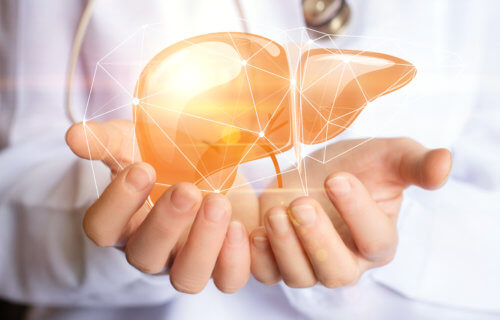CAMBRIDGE, United Kingdom — Although organ transplants save lives, relying on finding matches among a small supply of donors can be a serious problem. A medical technique which can grow “mini-organs” may help end the need for liver transplants one day. Scientists at the University of Cambridge say artificial bile ducts, grown in a lab, behave just like the real thing and can repair damaged tissue.
The new study paves the way for cell therapies to treat liver disease and combat the donor shortage crisis. Researchers say the technique has been shown to work both in living mice and with human livers taken from donors.
“Given the chronic shortage of donor organs, it’s important to look at ways of repairing damaged organs, or even provide alternatives to organ transplantation,” says senior author Dr. Fotios Sampaziotis of the Stem Cell Institute in a university release.
“We’ve been using organoids for several years now to understand biology and disease or their regeneration capacity in small animals, but we have always hoped to be able to use them to repair human damaged tissue. Ours is the first study to show, in principle, that this should be possible.”
How can organoids save those needing a liver transplant?
Organoids are miniature organs made from human stem cells that can mimic their shape and function. The bile duct is a tube that acts as the liver’s “waste disposal system,” connecting it to the small intestine. It is essential for food digestion.
Breakdowns in this system cause a third of adult and 70 percent of child liver transplants, with no alternative treatments. According to the National Foundation for Transplants, the average wait time to find a new liver is 239 days.
Creating “mini-bile ducts” as replacements to restore a patient’s liver to health is a world first. They could also fix damaged organ donor livers so that they can still be viable for transplantation.
The study, published in Science, took advantage of a new “perfusion system” that maintains donated organs outside the body. Researchers injected cultured biliary cells (or cholangiocytes) into human livers deemed unsuitable for transplantation due to bile duct damage.
The approach would work for a diversity of organs and diseases to accelerate the clinical application of cell-based therapy. Scientists discovered healthy biliary cells from the gallbladder could be converted to those of the destroyed ducts using bile acid. Simply put, scientists harvest a patient’s own cells to repair the failing liver.
In experiments, researchers turned gallbladder cells into organoids. The clusters developed into a 3D structure with the same architecture, function, and gene expression as the original organ. The team then grafted them into mice where they were able to repair damaged ducts.
Making some organ transplants a thing of the past
The procedure opens the door to regenerative medical applications for diseases affecting the biliary system. The method was equally successful on human donor livers from the perfusion machine at Addenbrooke’s Hospital in Cambridge. The machine mimics the body to ensure a liver’s functionality before transplant.
When scientists injected the gallbladder organoids, they repaired the organ’s ducts and restored their function, confirming the procedure can regenerate damaged livers.
“This is the first time that we’ve been able to show that a human liver can be enhanced or repaired using cells grown in the lab,” says joint senior author Professor Ludovic Vallier. “We have further work to do to test the safety and viability of this approach, but hope we will be able to transfer this into the clinic in the coming years.”
The researchers anticipate the work will lead to the direct repair of a patient’s own liver. However, they believe it may also offer a potential way of repairing damaged donor livers too, making more organs suitable for future donation.
“This is an important step towards allowing us to use organs previously deemed unsuitable for transplantation,” study author Kourosh Saeb-Parsy adds. “In future, it could help reduce the pressure on the transplant waiting list.”
SWNS writer Mark Waghorn contributed to this report.
https://youtu.be/Ypvjlm5fYxo
